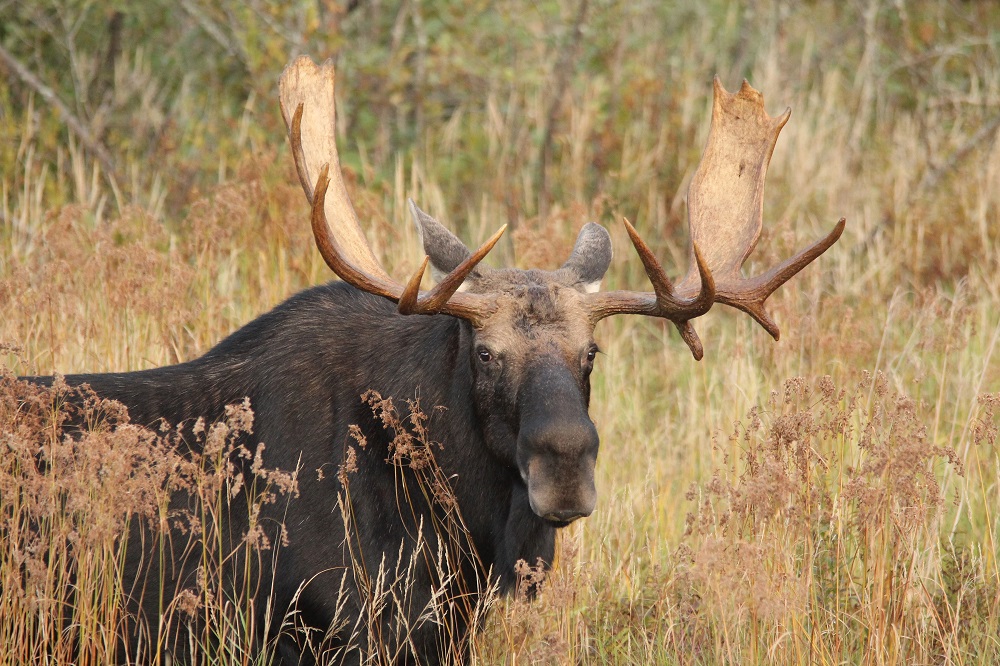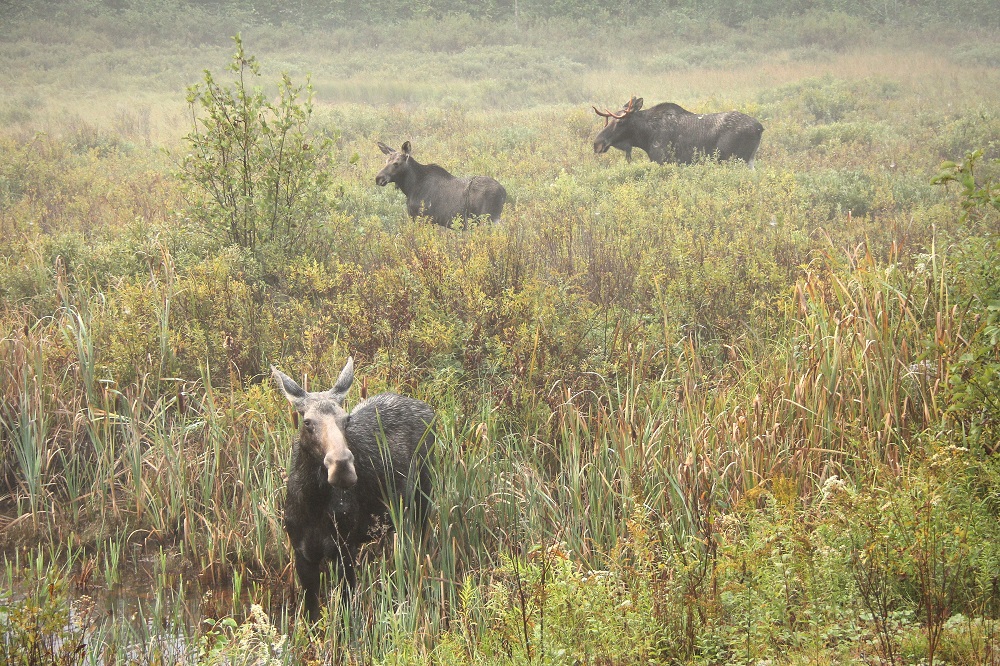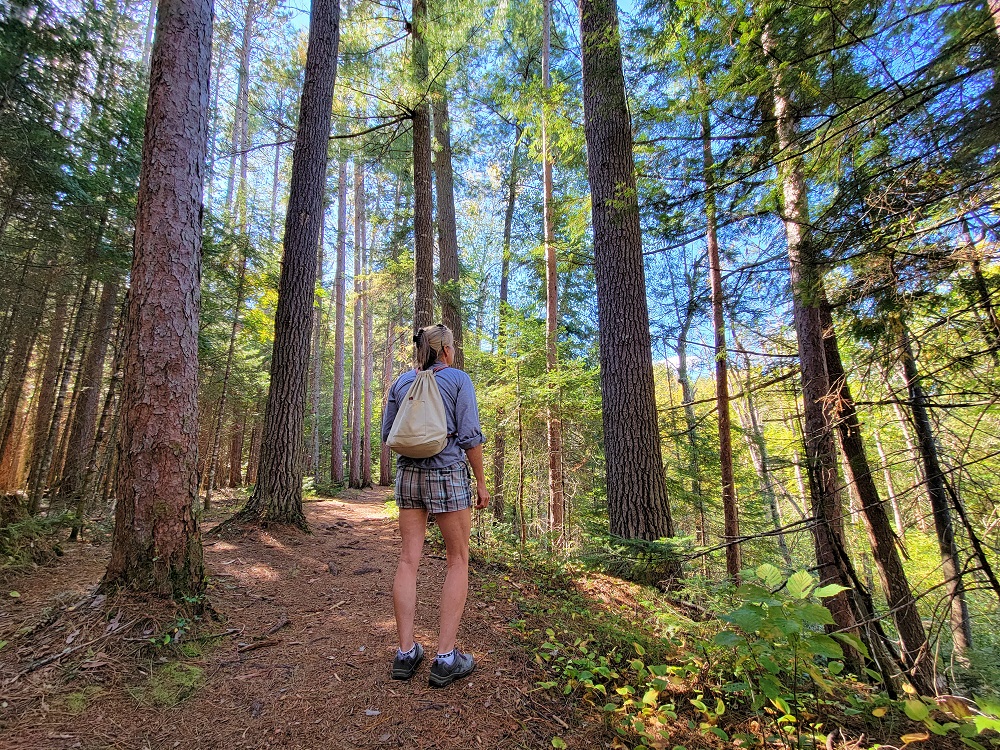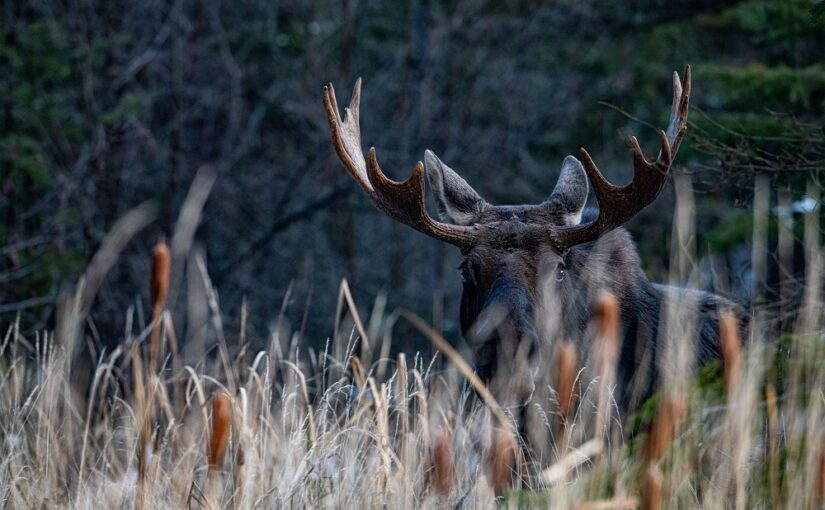Today’s post comes from Jazmin Gall, Acting Assistant Discovery Leader at Samuel de Champlain Provincial Park.
Moose are, without a doubt, a magnificent sight to see.
Having the opportunity to see one while camping is a memory that can last a lifetime. It’s something that never gets old.
Despite their size, moose can sometimes be tricky to spot. So when we find evidence of them like their tracks or fallen antlers, it’s an exciting day!
Not just for your a”moose”ment
It’s quite the treat to be walking in the woods and stumble across an antler of moose.

Some people choose to pick it up and take it home, claiming it as a prize to be hung above a fireplace or a doorway.
Now moose truly are impressive creatures and deserve to be appreciated. However, that appreciation is best expressed by snapping a picture of your find and then walking away.
Here’s why:
Providing a “bull”anced diet for wildlife
Male moose (also called bulls) grow a new pair of antlers every spring to impress potential mates and to show up competitors.
But by the time winter rolls around, breeding season is over and the antlers no longer serve a purpose, so they are shed.

Once the antlers fall to the ground, the moose carries on with its life, now a couple pounds lighter. But the usefulness of these lost antlers doesn’t stop there!
As these antlers nestle into the ground of the forest floor, many other animals seek them out.

Rodents like mice, chipmunks, porcupines, and other animals like raccoons, rabbits, opossums and even deer will take advantage of the dropped antlers, gnawing and chewing on them.
Just like us, animals need to have a balanced diet to get all the necessary vitamins and minerals, and nibbling on antlers and bones give them essential nutrients like calcium and phosphorous.
But if all male moose shed their antlers every year, why aren’t we finding more whole antlers or even partially consumed ones on our walks through the forests?

Well, that’s because as the antlers rest on the ground and animals take their share, the antlers simultaneously decompose.
Those same nutrients that the mammals require are also being leached back into the soil, now available for plants to use.
Antlers play a critical role in an ecosystem’s nutrient cycling
That’s why we suggest letting antlers lie on the forest floor.
Many animals and plants depend on them for proper growth and development. Us humans only appreciate on them as a work of art in our homes.
Leave no trace principles have a double meaning: ensuring we aren’t leaving any evidence of our presence and not taking any evidence of wildlife with us.
Don’t forget: removing any natural object from a provincial park is prohibited, and you could face a fine.
